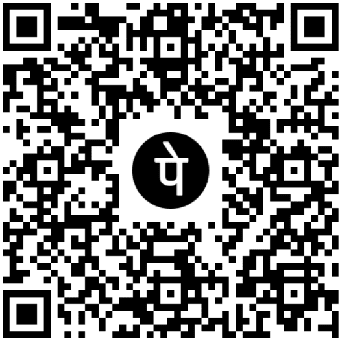Ashwin Solanki
Australian batter Travis Head made a
'King Pair' in the second Test against the West Indies. This means he got out
on the first ball in both innings of the test. In the first inning, he was
dismissed by Kemar Roach, and in the second inning, Shamarh
Joseph sent him back to the pavilion.
This is not the first time in
cricket that a batsman has made a King Pair. Australia's Adam Gilchrist
achieved this feat in 2001. India's Suryakumar Yadav, on the other hand,
has been out for a duck in three consecutive innings just last year, a
phenomenon known as a 'batting hat-trick' in cricket.
Getting out for a duck in cricket is
not a good thing, but to make it worse, there are different names given for it.
Today, let's explore 13 different types of zeros in cricket:
- **Duck:** Getting out without opening the account or
getting out on zero is called a duck. Travis Head made a duck against the
West Indies. The West Indies' Courtney Walsh holds the record for the most
ducks in Tests with 43. In ODIs, Sri Lanka's Sanath Jayasuriya (34
ducks) and in T20Is, Ireland's Paul Stirling (13 ducks) have the
most ducks.
Sri Lanka's Muttiah Muralitharan holds
the record for the most times (59) getting out on zero in international
cricket.
- **Golden Duck:** Getting out on the first ball of the
inning is called a golden duck. Travis Head also made a golden duck in his
innings, as he was dismissed on the first ball in the first inning. In
Tests, players have been dismissed for a golden duck 1770 times, in ODIs
2174 times, and in T20Is 1804 times.
- **Silver Duck:** Getting out on the second ball of the
inning is called a silver duck. India's Shubman Gill also made a
silver duck against England in the second innings of the second Test.
So far, players have been dismissed
for a silver duck 1292 times in Tests, 1497 times in ODIs, and 966 times in
T20Is. In a Test against South Africa in January, three Indian players made
silver ducks in the second Test.
- **Bronze Duck:** Getting out on the third ball of the
inning is called a bronze duck. Players have made bronze ducks 926 times
in Tests, 965 times in ODIs, and 538 times in T20Is.
- **Diamond Duck:** Getting out without facing a ball is
called a diamond duck. This can happen through run-out, timed out, or
obstructing the field. Players have made diamond ducks 33 times in Tests,
166 times in ODIs, and 122 times in T20Is.
In the IPL 2023, Ravichandran
Ashwin made a diamond duck for Royal Challengers Bangalore against Sunrisers
Hyderabad on May 14.
- **Laughing Duck:** If a batsman gets out on zero and
the inning ends, it is called a laughing duck. West Indies' Joshua Da
Silva made a laughing duck in the second Test against England, getting
bowled by Shamarh Joseph after playing just six balls. With his wicket,
the West Indies won the Test.
- **Royal/Platinum Duck:** This term is used for openers
who get out on the first ball of the match or inning. It is also called a
platinum duck. Openers have been dismissed for a royal duck 153 times in
ODIs, 124 times in Tests, and 153 times in T20Is. India's Sunil Gavaskar
has made a royal duck five times in his Test career.
- **Pair:** Getting out for zero in both innings of a
Test match is called a pair. New Zealand's Chris Martin holds the record
for the most pairs in Tests with seven. India's BS Chandrasekhar has
suffered a pair four times against South Africa.
South Africa's Dean Elgar made a
pair in his debut Test against Australia in 2012.
- **King Pair:** Getting out on the first ball of both
innings of a Test match is called a King Pair. Travis Head made a King
Pair in the second Test against the West Indies. He got out on the first
ball in both innings.
So far, 23 players have made a King
Pair in Test cricket. India's Virender Sehwag achieved this unwanted
record against England in the Birmingham Test in 2011.
- **Batting Hat-Trick:** Getting out for zero in three consecutive
innings is called a batting hat-trick. In ODIs, 68 players and in T20Is,
31 players have achieved a batting hat-trick. In 2023, Suryakumar Yadav
made a batting hat-trick against Australia in the ODI series, getting out
for zero in three consecutive matches.
- **Batting Double Hat-Trick:** Getting out for zero in
four consecutive innings is called a batting double hat-trick. In Tests,
28 players have achieved a batting double hat-trick, and in ODIs, 5
players have achieved a batting double hat-trick. In T20Is, Pakistan's
Abdullah Shafique made a batting double hat-trick against South
Africa in January.
- **Batting Triple Hat-Trick:** Getting out for zero in
five consecutive innings is called a batting triple hat-trick. Only three
players in international cricket have achieved a batting triple hat-trick:
Australia's Bob Holland in 1985, India's Ajit Agarkar in 1999, and
Pakistan's Mohammad Asif in 2006.
- **Batting Quadruple Hat-Trick:** Getting out for zero
in six consecutive innings is called a batting quadruple hat-trick.
India's Ajit Agarkar is the only player in international cricket to
achieve a batting quadruple hat-trick. He was out for zero in seven
consecutive innings against Australia from December 1999 to January 2000.
If you want to avoid these 13 types
of ducks, it's better to score at least one run while batting. Otherwise, you
may end up with a '0 balance' and face 13 different types of penalties.





.jpg)
0 Comments